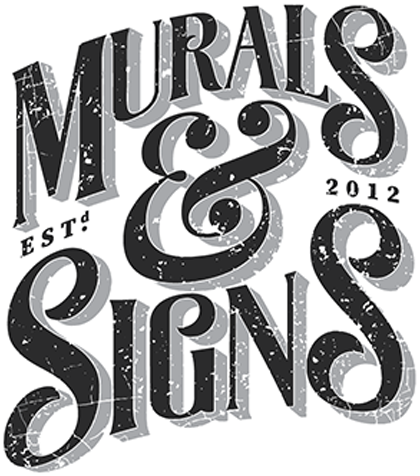In the world of sign painting, a captivating portfolio is more than a collection of images—it’s a visual testament to your skills, creativity, and unique artistic perspective. Whether you’re an established sign painting professional or just starting your journey, crafting an exceptional portfolio is crucial for attracting clients and standing out in a competitive landscape. This comprehensive guide explores the art of building a portfolio that not only showcases your sign painting expertise but also leaves a lasting impression on potential clients.
The Significance of a Compelling Portfolio
A well-curated portfolio serves as your artistic resume, illustrating your capabilities and telling your creative story. It’s the first impression potential clients have of your work, making it a powerful tool for generating interest, building trust, and ultimately securing sign painting projects.
Defining Your Portfolio’s Purpose
Before diving into the process of building your portfolio, clarify its purpose. Are you aiming to attract commercial clients, collaborate with fellow artists, or exhibit your work in galleries? Understanding your portfolio’s intended audience shapes the content and presentation.
Showcasing Your Progression
A portfolio isn’t just a snapshot of your current work—it’s a journey that highlights your growth as an artist. Include pieces from different stages of your career to demonstrate your evolution, from early projects to your most recent masterpieces.
Curating Your Portfolio Content
Selecting Your Best Work
Quality trumps quantity when it comes to portfolio content. Carefully curate a selection of your best sign painting pieces that showcase your range of skills, styles, and techniques. Choose pieces that resonate with your artistic vision and demonstrate your versatility.
Highlighting Diversity
Incorporate a diverse range of projects to highlight your adaptability. Include outdoor signs, indoor murals, hand-painted lettering, and custom designs. This breadth demonstrates your ability to tackle various sign painting challenges with finesse.
Adding Personal Projects
Don’t hesitate to include personal projects that showcase your artistic passion and creativity. These projects provide insight into your individual style and interests, setting you apart from others in the industry.
Crafting an Engaging Presentation
Organizing Your Portfolio
Arrange your portfolio in a logical and easy-to-navigate manner. Consider categorizing your work based on themes, styles, or types of projects. Clear organization allows viewers to explore your portfolio seamlessly.
Captivating Visuals
Present your sign painting pieces with high-resolution images that capture every intricate detail. Showcase different angles, close-ups, and in-progress shots to provide a comprehensive view of your work.
Adding Descriptive Context
Accompany each piece with descriptive context. Share insights into the project’s concept, challenges, and the techniques used. This narrative engages viewers and provides a deeper understanding of your creative process.
Leveraging Online Platforms
Designing a Professional Website
Create a dedicated website to host your portfolio. Use a clean and visually appealing design that complements your work. Optimize the website for both desktop and mobile devices to ensure a seamless viewing experience.
Utilizing Social Media Platforms
Harness the power of social media platforms to extend your portfolio’s reach. Regularly share your sign painting work on platforms like Instagram, Pinterest, and Behance. Use relevant hashtags and engage with your audience to foster connections.
Online Portfolio Platforms
Explore online portfolio platforms like Dribbble, Adobe Portfolio, and Carbonmade. These platforms offer customizable templates and built-in features to display your work professionally and reach a broader audience.
Tips for a Standout Portfolio
Consistency in Presentation
Maintain consistency in the presentation of your portfolio pieces. Use uniform backgrounds, lighting, and framing to create a cohesive visual experience.
Tailoring to Your Audience
Customize your portfolio’s content based on the preferences of your target audience. If you’re targeting corporate clients, emphasize projects with a professional aesthetic. If you’re appealing to art enthusiasts, showcase more experimental and expressive work.
Regular Updates
Keep your portfolio up to date with your latest sign painting projects. Regular updates demonstrate your ongoing commitment to your craft and keep your audience engaged.
Case Studies: Exceptional Sign Painting Portfolios
Sarah’s Nautical Signage
Sarah, a sign painting artist, crafted a portfolio showcasing her expertise in nautical-themed signs. Her portfolio featured hand-painted boat names, beachfront signage, and ocean-inspired murals. This thematic approach positioned her as a go-to artist for coastal businesses and waterfront properties.
John’s Time-Lapse Transformations
John, a sign painting artist, differentiated his portfolio by including time-lapse videos of his work’s creation process. These captivating videos provided a unique perspective into his skills and garnered attention on social media, leading to increased inquiries for his projects.
Conclusion
Crafting a portfolio that showcases your sign painting expertise is a strategic endeavor that requires thought, intention, and creativity. By selecting your best work, curating diverse content, and leveraging online platforms, you can create a powerful tool that captures attention, builds trust, and opens doors to exciting sign painting opportunities. Remember, your portfolio isn’t just a collection of images—it’s a visual narrative that tells the story of your artistic journey and sets the stage for a successful career in the world of sign painting.
Effective advertising strategies for commercial sign painters
